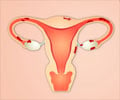A quick, accurate test has been developed to spot a common condition of the uterus linked to infertility that up to now could only be detected through surgery, a new study has reported.
A quick, accurate test has been developed to spot a common condition of the uterus linked to infertility that up to now could only be detected through surgery, a new study has reported.
Endometriosis is a chronic gynaecological disease in which cells from the lining of the uterus grow in other regions, especially the fallopian tubes and ovaries.The condition, which affects 10 to 15 percent of women of reproductive age, can cause infertility, painful periods and pain during sexual intercourse.
To date, the only sure way to diagnose endometriosis has been a form of surgery known as laparoscopy whereby a telescope lens is inserted into the body cavity through a small incision.
While relatively non-invasive, this so-called "key-hole" surgery can also aggravate infertility.
The new technique avoids surgery altogether, according to the study.
Researchers led by Ian Fraser at the University of Sydney and Maomar al-Jefout of Mu'tah University in Karak, Jordan, found that a small tissue sample taken from the uterine lining with a device inserted through the vagina works just as well.
In a separate study in the same journal, a team led by Thomas D'Hooghe at the University of Leuven Fertility Centre in Belgium showed that the density of nerve fibres in the lining of the uterus, known as the endometrium, was about 14 times higher in women with the condition.
A clinical comparison with diagnosis via laparoscopy showed that the biopsy technique correctly identified the disorder 98 percent of the time.
For just under 20 percent of women who did not have endometriosis, however, the new test registered "false positives".
"Endometrial biopsy is clearly less invasive than laparoscopy, and this test could help to reduce the current lengthy delay in diagnosis of the condition," Jefout said in a statement.
Source-AFP
LIN
 MEDINDIA
MEDINDIA




 Email
Email







